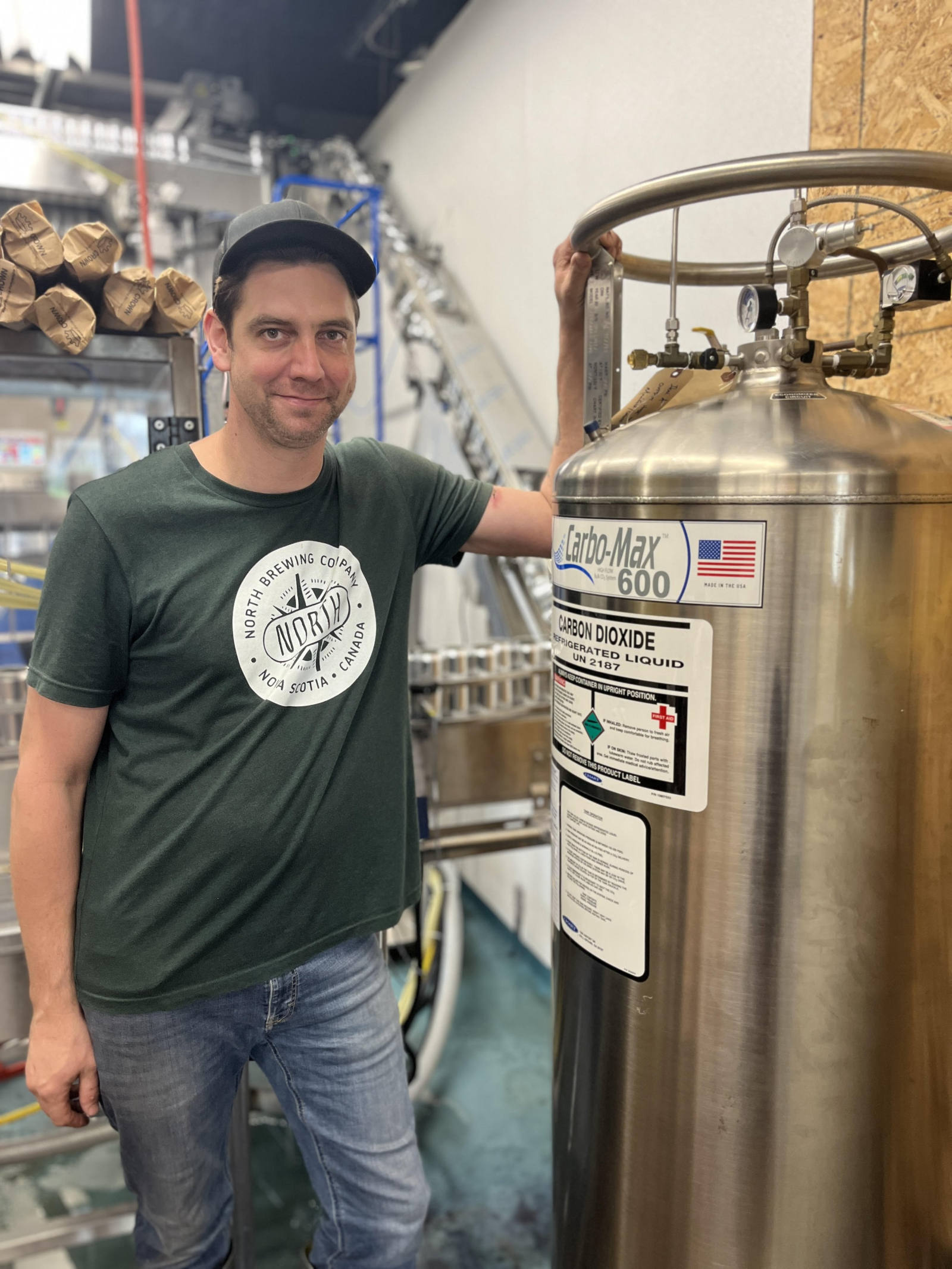Josh Herbin of North Brewing on Portland Street says carbon dioxide has no color, taste or smell, but it can consume 1,350 pounds each week during the summer.
“All that bubbling that happens here all the time is CO₂ that is generated from the yeast,” he says, pointing to a four-meter-high steel tank with a cone-shaped bottom.
CO₂ carbonates the fermented beer and removes oxygen. Clean new beer cans before pumping beer into cans. Carbon dioxide also pushes beer through the taps of bars and restaurants.
“We could fill 60,000 cans a month with this stuff and purge each of those cans for six seconds with CO₂, which is a lot,” Herbin says.
About 70 percent of the CO₂ it buys leaves the tanks as waste. He knew that larger breweries captured that gas and reused it, and he wondered if he could do the same.
He contacted Liam Cook of Navigate Energy, a startup designed to help small business owners find grants and financing for green projects in Nova Scotia.
“We help simplify clean energy projects for the business community,” Cook says.
What people are reading

From his previous work in the environmental sector, Cook says he knew that companies often take the “low-hanging fruit” and make easy changes, such as installing energy-efficient lighting, but struggle with more substantial changes that require large financial investments and multiple contractors. .
“Once you’re looking at more than a single solution, it’s more of a project manager role that’s required,” Cook says. “We really saw that niche in the business community, ideally among those who pay their own utility costs. With that hand-in-hand support, I help them find the solutions they need and I help them get the financing that will make those solutions possible.”
Josh Herbin of North Brewing on Portland Street says carbon dioxide has no color, taste or smell, but it can consume 1,350 pounds each week during the summer.

Cook says the brewery’s biggest utility cost wasn’t oil, electricity or water, but the CO₂ trucked to the company every week.
He connected North Brewing to the Halifax Climate Investment, Innovation and Impact Fund (HCi3) and helped secure a $25,000 grant. The brewery also received letters of support from other craft breweries, including Tatamagouche, Two Crows and Propeller.
North Brewing used the funds to install a new system that captures the released CO₂.
“I don’t think it’s aggressive to say we can cut our CO₂ use in half,” says Herbin. He installed the new system in October and will monitor and share the results.
The system was built with off-the-shelf parts and is expandable – two key components of the grant.
“We want it to be something open source. Once we do the research and report, other people will be able to install something like this themselves,” Herbin says.
Cook says companies can often get financing for 60 to 80 percent of the project cost and zero percent financing for the rest. He finds funding and grants and helps business owners navigate the process with contractors.
Herbin says it’s a big improvement for his decade-old business. He is considering solar energy as the next advancement.
“Beer is an agricultural product: it is grains, hops, yeast and water. And now all the components of beer are threatened by climate change,” he says. “If we get to the point where we can’t grow grains or hops, it will mean the end of the industry.”
This story is shared by the Climate Story Network, an initiative of Climate Focus, a nonprofit organization dedicated to covering stories about community climate solutions.
